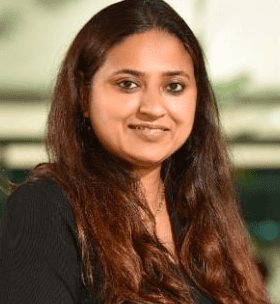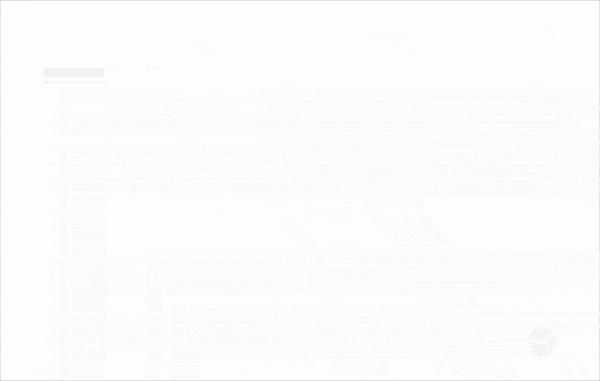Top 19 HR Challenges in 2024 (+Solutions)
- Published:
- Modified: July 22, 2024


HR and people departments face complex challenges, from HR transformation and integrating new people-centric technologies to changing workforce demographics and quitting to the increasing need for better work-life balance as employees seek organizations that commit to sustainability, diversity, and transparency.
As these changes pave the way for the future of HR, HR teams face some inevitable challenges that can impact effective resource management and ultimately connect to business outcomes. In this article, we’ll explore the common and mission-critical HR challenges facing HR teams over the coming years and look at the best ways to overcome them.
Top HR Challenges
- Attracting top talent
- Change management
- Reskilling and upskilling
- Balancing L&D without disrupting output
- Building digital dexterity
- Managing diversity
- Employee engagement
- Employee retention
- Leadership development
- Employee health and well-being
- Employee onboarding
- New-hire training
- Balancing remote, hybrid, and in-office work
- Employee experience
- Data-driven decision-making
- Compensation and benefits
- Leveraging AI for greater efficiency and productivity
- Fostering manager-employee relationships
- Compliance with laws and regulations
What Are HR Challenges?
HR challenges refer to the various obstacles or complexities encountered by HR professionals in managing and optimizing the workforce within an organization. These challenges arise from internal and external factors, including but not limited to changes in labor laws, evolving workforce demographics, technological advancements, globalization, organizational restructuring, talent management, cultural dynamics, etc.
For instance, 2020 put forward an enormous challenge for the HR departments to create, tackle, and manage efficient remote workforces for businesses to keep running successfully amidst the pandemic.
Effectively addressing HR challenges requires strategic planning, proactive measures, and innovative solutions to ensure the organization can attract, develop, engage, and retain talent while aligning with its broader goals and objectives.

Top 19 HR Challenges And How To Overcome Them
Here are some of the most pressing challenges impacting HR teams, and contextual solutions to overcome each of them.
1. Attracting top talent
Talent acquisition is a top priority for HR given the competitive nature of the current market. Demographic changes, growing demand for talent, and a shortage of suitable candidates require companies to constantly search for and hire top talent. However, with the ever-increasing demand for skilled workers, HR teams struggle to attract candidates with compatible skills or experience, which poses one of the most significant challenges of workforce management.
- Employer brand enhancement: HR can work on enhancing the organization’s employer brand through targeted marketing campaigns, showcasing company culture, values, and employee testimonials across various platforms.
- Talent pipeline development: Proactively building relationships with potential candidates through talent pipelines, networking events, and partnerships with educational institutions can help create a steady stream of qualified candidates.
- Flexible work arrangements: Offering flexible work arrangements, such as remote work options or alternative work schedules, can attract top talent who value flexibility and work-life balance.
- Skills development initiatives: Investing in employee training and development programs to upskill existing staff and bridge skills gaps can help attract top talent by demonstrating a commitment to professional growth and development.
- Diversity and inclusion initiatives: Implementing diversity and inclusion initiatives, such as unconscious bias training, diverse hiring practices, and employee resource groups, can create a more inclusive workplace culture that appeals to a wide range of candidates.

Romita Mukherjee
Associate VP, HR at Whatfix
2. Change management
Change is never easy, but it’s the nature of the business space. Implementing change and developing long-term plans for that change is one of the most significant human resource challenges. Organizational change can be structural, economical, geographical, procedural, managerial, or technological.
No matter the type of change, HR teams face major issues in terms of reduced employee morale and satisfaction, self-doubt, and attrition while managing it. The inability to adapt to change could be due to employee resistance to change, lack of necessary skill and training to adapt to change, sudden but drastic requirements to change, etc.
- Clear communication: HR teams must ensure transparent communication about the reasons for change, its benefits, and how it aligns with the organization’s vision and goals.
- Engaging leadership: HR must work closely with senior leaders to ensure alignment and commitment to change initiatives. Leaders should actively communicate and model the desired behaviors to inspire employee confidence and trust.
- Employee involvement: Involving employees in the change process by soliciting their input, addressing concerns, and providing opportunities for feedback and participation can foster ownership and commitment to the change.
- Training and development: HR should identify skill gaps early on and provide training and development opportunities to equip employees with the necessary competencies to adapt to the changes effectively.
- Invest in tools to enable employees: A digital adoption platform (DAP) empowers HR and IT teams to scale enterprise-wide technological changes by providing in-app contextual onboarding, training, and moment-of-need support across any desktop, web, or mobile application with step-by-step walkthroughs, tooltips, videos, resource centers, end-user guides, and more.
- Change champions: Identifying and empowering change champions within the organization can help drive adoption and mitigate resistance by fostering a positive peer influence and support network.

3. Reskilling and upskilling
Advances in automation, artificial intelligence, and digitalization are reshaping industries and job roles, leading to a demand for new skills that many employees may lack. There is often a gap between employees’ skills and those required for emerging roles, resulting in challenges in finding qualified talent internally or externally.
Cultivating a culture of continuous learning and skill development poses a challenge for organizations as employees resist change or lack the motivation to invest in their own development.
- Skills assessment: Conducting a thorough skill gap analysis to identify existing skill gaps and future skill needs is essential for developing targeted reskilling and upskilling programs.
- Personalized learning paths: Offering personalized learning paths tailored to individual employee needs can enhance engagement and motivation for skill development.
- Internal mobility programs: Implementing internal mobility programs that allow employees to explore new roles within the organization and acquire new skills can help retain talent and address skills gaps.
- Leverage technology – Leverage employee training software such as corporate LMS, digital adoption platform, or a knowledge management system to deliver engaging reskilling and upskilling programs.
- Continuous feedback and recognition: Providing regular feedback and recognition for employees’ efforts in acquiring new skills can foster a culture of learning and reinforce the importance of skill development.



4. Balancing L&D without disrupting employee output
While HR teams can emphasize the importance of employee learning to develop new skills and competencies. Sadly, at the end of the day, employee productivity and output triumph over learning.
However, what if HR teams could embed learning into micro-interactions directly into employee workflows and tasks? This model is referred to as learning in the flow of work and is not only a way to keep productivity high – it is actually a more effective learning style.
The 70-20-10 Model for corporate L&D breaks down how employees learn, stating that employees acquire 70% of their knowledge from on-the-job experiences and hands-on learning, 20% from social learning and experiences with colleagues, and 10% from traditional, formal training and development programs.
Organizations can enable employees to maximize productivity, improve productivity, transfer knowledge, and support them at critical moments in their workflows with a digital adoption platform (DAP) like Whatfix.
With Whatfix, create in-app guidance that provides micro-nudges and supports employees’ daily tasks and processes with elements like Flows, Tours, Smart Tips, Task Lists, and more.


With Whatfix Self Help, connect your company’s knowledge repositories, help documentation, SOPs, policies, LMS modules, and training resources to an in-app resource center that provides employees with contextual answers to any work-related issue they encounter, at the moment of need.
Employees can search for any issue they’re facing or documentation they’re looking for with Self Help’s search function, and Self Help’s AI can provide contextual, conversational answers to any employee questions – all without leaving the application they’re using.


5. Building digital dexterity
The last decade has seen HR digital transformation scale across organizations as companies upgrade their legacy processes and systems to new cloud technologies. These new software applications help automate manual processes, drive innovation, and enable employee efficiency and productivity. The ability of your workforce to adopt these new software applications or technology designed to make them more efficient is called digital dexterity.
Although digital transformation isn’t the sole responsibility of a specific department– and neither is digital dexterity– the burden of creating application onboarding, reskilling, and upskilling training content and courses for building digital dexterity skills falls on the HR and L&D departments.
- Digital skills training: Providing comprehensive digital skills training programs that cover a range of topics, from basic digital literacy to advanced technical skills, can help bridge the skills gap and build employees’ confidence and competence in using digital tools.
- Continuous learning culture: Cultivating a culture of continuous learning and innovation where employees are encouraged and supported to continuously develop their digital skills and explore new technologies is essential for building digital dexterity.
- User-centric design: Designing digital tools and interfaces with the end user in mind, considering factors such as ease of use, intuitiveness, and accessibility, can help reduce resistance to change and improve adoption rates.
- Change management: Implementing effective change management strategies that involve clear communication, stakeholder engagement, and training can help overcome resistance to digital transformation initiatives and ensure smooth adoption of new digital tools and processes.
- Collaboration and knowledge sharing: Encouraging collaboration and knowledge sharing among employees through digital collaboration platforms, online communities, and peer-to-peer learning can facilitate the exchange of best practices and foster a culture of digital innovation.
6. Managing diversity
Globalization is affecting every business in every part of the world. As organizations strive to create inclusive workplaces that embrace employees from diverse backgrounds, cultures, perspectives, and experiences, managing diversity emerges to be a critical HR challenge.
- Diversity training and education: Providing comprehensive diversity training and education programs for employees and leaders can raise awareness of unconscious bias, promote cultural competence, and build empathy and understanding across diverse groups.
- Inclusive policies and practices: Reviewing and revising organizational policies, practices, and procedures to ensure they are inclusive and equitable for all employees can help mitigate bias and create a level playing field.
- Diverse recruitment and hiring practices: Implementing recruitment and hiring practices, such as using diverse interview panels, removing biases from job descriptions and selection criteria, and implementing blind resume screening, can help attract and retain diverse talent.
- Inclusive leadership development: Providing leadership development programs that focus on inclusive leadership skills, such as active listening, empathy, and cultural competence, can empower leaders to create inclusive teams and foster a sense of belonging.
- Employee resource groups (ERGs): According to Forbes, 2023, 90% of Fortune 500 companies are utilizing employee resource groups to help with DEI efforts. ERG groups for underrepresented employees can provide a platform for networking, mentorship, and advocacy, enhancing inclusion and belonging in the workplace.
7. Employee engagement
Employee engagement is an ongoing concern for HR professionals, as keeping employees engaged is critical to a business’s success.
Gallup finds that quiet quitters make up at least 50% of the US workforce and quiet quitting aligns with poor employee engagement.
When employees find their jobs challenging, engaging, and rewarding, they’re more likely to stick around and invest themselves in their work. On the other hand, disengaged employees who are dissatisfied with their roles and feel disconnected from their work can cause significant problems in the workplace. Not only do they underperform, but they also create friction for high performers.
- Flexible work arrangements: Offering flexible work arrangements, such as remote work options, flexible hours, and compressed workweeks, can empower employees to better balance work and personal commitments, leading to increased engagement. According to a McKinsey survey, hybrid work led to a 45% boost in employee engagement, which translated to better customer satisfaction.
- Technology and tools: Providing employees with the necessary technology and tools for effective communication, collaboration, and productivity, such as digital collaboration platforms and project management software, can facilitate engagement in remote and hybrid work environments.
- Recognition and rewards: Implementing formal and informal recognition programs that acknowledge and celebrate employees’ achievements and contributions can boost morale, motivation, and engagement.
- Leadership development: Investing in leadership development programs to cultivate effective leadership skills, such as empathy, communication, and coaching, can empower leaders to inspire and engage their teams effectively.
8. Employee retention
An employee leaving to join another organization they feel is a better fit is not a pleasant scenario for any employer. While experts estimate that it costs 33% of an employee’s salary to replace them, in reality, it can cost 3x or even 4x the departing employee’s salary to hire a replacement. In addition, employee turnover often leads to a loss of institutional knowledge and can negatively impact a company’s culture.
Employee retention reflects the complexities of the modern workplace and the evolving expectations of the workforce. Addressing this challenge involves understanding its multifaceted nature and implementing comprehensive strategies tailored to the specific needs of the organization and its employees.
- Flexible work arrangements: Implementing flexible work policies, such as work from home or hybrid work, that accommodate different life stages and personal commitments can significantly enhance job satisfaction and retention.
- Personalized employee experience: Tailoring career development plans, benefits, and rewards to fit individual employee needs and aspirations can foster a sense of belonging and loyalty.
- Strong organizational culture: Building a culture that values inclusivity, transparency, and employee feedback creates an environment where employees feel valued and motivated to stay.
- Continuous learning and development: Offering ongoing training and development opportunities enables employees to grow with the company, reducing the likelihood of them seeking advancement elsewhere.
- Mental health support: Providing comprehensive mental health resources, promoting work-life balance, and creating a supportive work environment can help mitigate stress and burnout, contributing to higher retention rates.
- Effective communication and engagement: Regular check-ins, surveys, and forums for employee feedback allow organizations to identify and address concerns before they lead to turnover.
9. Leadership development
Organizations often overlook the need for training and grooming of the leadership. It’s a common misconception that leaders have reached a stage where they don’t require ongoing training. And even if they do, it can be achieved through self-learning.
However, the lack of leadership development results in employer-employee conflicts, disagreements in the workplace, an unhealthy work environment, and employees leaving due to poor relationships with their managers. This affects employee morale, satisfaction, and the organization’s goals; hence is a significant HR challenge.
- Customized leadership development programs: Tailoring development programs to address the specific needs, weaknesses, and strengths of individual leaders or leadership teams can lead to more effective outcomes. This includes a mix of formal training, coaching, mentoring, and experiential learning opportunities.
- Fostering a culture of continuous learning: Creating an organizational culture that values and encourages continuous learning and development at all levels can help leaders adapt to new leadership models and technologies.
- Cross-generational mentoring: Implementing cross-generational mentoring programs can leverage the diverse experiences and perspectives within the workforce, fostering knowledge transfer and enhancing understanding across different age groups.
- Encouraging self-development: Encouraging leaders to take ownership of their development through self-assessment tools, reading, peer learning groups, and self-reflection exercises can complement formal training and foster a mindset of continuous improvement.
10. Employee health and well-being
Employee health and safety standards are probably one of the more apparent human resource challenges. These concerts are not only governed by labor law, but they’re also crucial to general employee well-being.
The psychological well-being of your employees can deteriorate due to high demands, limited time, frustration, and burnout.
- Promoting a culture of openness: Creating a supportive environment that encourages open discussions about mental health and well-being can help reduce stigma. A research by MIT Sloan found that companies that adopted five of these wellness initiatives—active listening, revisiting values, modeling wellness, addressing wellness in reviews, and introducing “bookends” to the workday—were able to improve employee loyalty by 79%, helping retain top talent while saving the time, money, and resources needed for new hires.
- Wellness programs: Designing wellness programs that offer a variety of options can cater to the diverse needs of the workforce. This includes access to mental health support, fitness programs, nutrition counseling, and financial wellness resources, among others.
- Enhanced support for remote workers: Implementing specific initiatives to support remote and hybrid workers, such as virtual wellness activities, ergonomic assessments for home offices, and regular check-ins to monitor employee well-being, can mitigate the challenges of remote work.
- Access to professional support: Ensuring easy access to professional support services, such as Employee Assistance Programs (EAPs), counseling, and telehealth services, can address a wide range of health and well-being concerns.
- Regular assessments and feedback: Conducting regular surveys and assessments to gather feedback on the effectiveness of health and well-being initiatives can help organizations adjust their programs to better meet employee needs.
11. Employee onboarding
Employee onboarding presents a complex challenge for HR teams, primarily due to the need to effectively integrate new hires into the organizational culture in a manner that fosters engagement, productivity, and retention from day one. This task is made more intricate by the diverse backgrounds of new employees, the increasing prevalence of remote and hybrid work environments, and the rapid pace of technological change.
- Digital onboarding platforms: Utilizing comprehensive digital platforms for employee onboarding helps streamline the process. These platforms offer a mix of informational content, training modules, and interactive elements tailored to different employee roles and learning preferences.
- Virtual meet and greets: Organizing virtual introductions with team members and key stakeholders can help build connections and foster a sense of belonging, even in remote settings.
- Staggered information delivery: Breaking down the onboarding information into manageable chunks or a 30-60-90 day plan can help prevent information overload. Breaking down a new hire’s learning process into 30-day increments empowers them to focus on learning specific skills and prevents burnout.
- Personalized onboarding experiences: Tailoring the onboarding experience to meet the individual needs of each new hire can enhance engagement and effectiveness. This includes assigning mentors, offering role-specific training, and adapting the pace of onboarding according to the individual’s previous experience and learning speed.
- Feedback loops: Incorporating regular feedback sessions throughout the onboarding process allows HR to address any issues or concerns in real-time and continuously improve the onboarding experience. This can include both informal check-ins and formal feedback mechanisms.
- Engagement with company culture: Creating opportunities for new hires to engage with the company’s culture, mission, and values from the outset is crucial. This can be achieved through storytelling, involvement in cultural or social events (even if virtual), and discussions that reinforce the company’s core values and expected behaviors.
✓ Thank you, the template will be sent to your email
12. New-hire training
New hire training faces the challenge of equipping a diverse and often geographically dispersed workforce with the skills and knowledge needed to perform effectively in an increasingly digital and fast-paced work environment. The rapid evolution of technology, the adoption of remote and hybrid work models, and the continuous need for upskilling in response to changing job requirements demand a flexible, engaging, and efficient approach to training new employees.
If the initial training is a disjointed or nonexistent effort, new employees will struggle to understand and perform their duties successfully – and you may even find yourself losing employees faster than you can hire them.
- Leveraging technology: Implement employee training software such as digital adoption platforms, and learning management systems (LMS), to provide dynamic, interactive training experiences for your new hires. Whatfix digital adoption platform enables new hire training by providing interactive, in-app guidance and support directly within the enterprise applications and software. By overlaying step-by-step walkthroughs, tooltips, and pop-ups onto existing interfaces, Whatfix helps new employees navigate complex software without leaving their workflow, significantly reducing the learning curve and improving productivity from the outset.


Above: In-app employee guidance created with the Whatfix Digital Adoption Platform
Whatfix’s DAP empowers organizations with a no-code editor to create in-app guided flows, onboarding tasklists, pop-ups, tooltips, alerts, reminders, self-help wikis, and more to enable employees to use software better. Enable your employees to become proficient in new applications faster, create interactive process documentation, guide users through process changes, assist employees through infrequent tasks, and provide self-help performance support on your CRM, ERP, HCM, or any desktop, web, or mobile application.
- Microlearning and gamification: Breaking down training content into short, manageable segments (microlearning) and incorporating elements of gamification can increase engagement and retention of information, catering to diverse learning preferences and reducing cognitive overload.
- Blended learning: Combining online learning with in-person sessions or live virtual workshops can address the challenges of remote and hybrid work environments. This approach allows for the personalization of learning paths and facilitates real-time feedback and interaction.
- Mentorship and peer learning: Encouraging mentorship and peer learning opportunities can complement formal training efforts. Pairing new hires with more experienced employees for mentorship or organizing peer learning sessions can facilitate knowledge sharing, foster connections, and speed up the onboarding process.
- Data-driven training: Implementing analytics and feedback mechanisms to measure training effectiveness allows HR teams to make data-driven decisions. Monitoring engagement levels, completion rates, and post-training performance can help in continuously refining and improving the training process. Whatfix DAP significantly contributes to measuring training effectiveness by providing insights into learners’ actual usage and proficiency with digital tools and processes. The platforms offer real-time analytics that track employees’ interactions with software applications and digital workflows, capturing data on their actions, completion rates, and task efficiency.


13. Balancing remote, hybrid, and in-office work
Balancing remote, hybrid, and in-office work arrangements is a significant HR challenge in 2024, as organizations strive to accommodate diverse employee preferences and operational requirements while maintaining productivity, collaboration, and a cohesive company culture. This balancing act involves navigating logistical complexities, technological demands, and the nuances of team dynamics across different working environments.
- Leveraging technology for unified communication: According to Statista, 2023, 43% of employees report that the hardest part about working remotely is not feeling included in meetings. Investing in comprehensive communication and collaboration tools that facilitate seamless interaction across all work arrangements in critical for balancing remote work models. Regular use of video conferencing, project management software, and digital workspaces can help bridge the gap between different work settings.
- Implementing inclusive policies: Developing policies that ensure fair treatment, access, and opportunities for all employees, regardless of their work arrangement. This includes regular check-ins, inclusive meeting practices, and equitable access to development and advancement opportunities.
- Building a flexible IT infrastructure: Creating an IT infrastructure that supports secure, efficient, and flexible work is crucial. This means providing reliable access to corporate networks, cloud-based resources, and ensuring that all employees have the necessary hardware and software to perform their roles effectively.
- Redefining performance metrics: Establishing clear, objective, and measurable performance indicators that are aligned with organizational goals and individual roles, rather than focusing on time spent in the office. This approach supports fair and transparent assessment of all employees.
- Training for managers: Providing managers with training on leading distributed teams effectively, including how to communicate effectively, manage projects remotely, and foster team cohesion and motivation across different work arrangements.
14. Employee experience
Employee experience is the aggregation of all interactions and observations an employee has throughout their journey. This includes experiences within their job role, work environment, and management.
Studies show that companies that invest in optimizing employee experience see:
- Higher profits overall and higher revenue from new products
- Better customer satisfaction, higher NPS, and easier upsells
- Higher employee satisfaction combined with more productive and bought-in team members
- Better new hire recruiting and employee retention.
While connecting employee experience with overall business success may seem straightforward, ensuring that personnel has consistently favorable experiences throughout their employee life cycle is no simple task. It requires ongoing monitoring and management for the HR teams to excel in these efforts.
- Data-driven personalization: Leveraging HR analytics and employee feedback platforms to gather insights into individual preferences and experiences allows organizations to tailor their approaches without sacrificing scalability. This data can inform personalized learning paths, flexible working arrangements, and customized benefits packages.
- Unified digital workplace platforms: Implementing comprehensive digital workplace platforms that streamline communication, collaboration, and access to resources can enhance the employee experience for both remote and in-office staff. These platforms should be user-friendly and integrate seamlessly with other tools to reduce complexity.
- Cultivating community and connection: Organizing regular virtual and physical events that reinforce company culture and values helps build a sense of community. Encouraging informal interactions and creating spaces for social connection can foster a more inclusive and cohesive culture.
- Agile feedback mechanisms: Establishing regular, agile feedback channels (such as pulse surveys and suggestion boxes) enables HR to stay attuned to employee needs and sentiments in real-time. This feedback should directly inform iterative improvements to policies, practices, and the work environment.
15. Data-driven decision-making
Data-driven decision-making in HR has become increasingly critical as organizations seek to leverage data analytics to inform their strategies on recruitment, employee engagement, retention, performance management, and other key areas of human resources. However, adopting a data-driven approach presents several challenges, necessitating sophisticated solutions to fully realize its potential.
- Investing in HR technology: Implementing advanced HR technology solutions, such as integrated Human Resource Information Systems (HRIS) and advanced analytics platforms, can enhance data quality and facilitate the integration of data from diverse sources, making it easier to derive actionable insights.
- Upskilling and cross-functional teams: Developing the data literacy of HR professionals and fostering collaboration between HR and data science teams can bridge the skills gap. Offering training and creating cross-functional teams ensures that data-driven insights are both accurate and relevant to HR objectives.
- Focus on actionable metrics: Developing clear metrics and KPIs that are aligned with organizational goals can help translate data insights into practical actions. This involves not just looking at the data but understanding the context and the strategic implications of the insights provided.
16. Compensation and benefits
The challenge of designing and managing compensation and benefits packages that are competitive, equitable, and aligned with organizational goals is more complex than ever. This complexity is driven by evolving employee expectations, the need for flexibility in the face of a dynamic global economy, and the increasing diversity of the workforce. These packages must not only attract and retain top talent but also promote inclusivity and well-being, reflecting the values of a modern, socially conscious organization.
Strategic alignment: Aligning compensation and benefits strategies with organizational goals and values ensures that these offerings support the broader mission of the company. This involves regular benchmarking against industry standards to remain competitive and sustainable.
Flexible benefits platforms: Implementing flexible benefits platforms can provide employees with a menu of options to choose from, allowing for personalization within a framework that remains manageable and cost-effective for the organization.
Technology and data analytics: Leveraging technology and data analytics can help HR teams manage the complexity of global compensation and benefits strategies. These tools can offer insights into employee preferences, compliance requirements, and the impact of benefits on retention and performance.
ROI analysis: Developing metrics to assess the impact of compensation and benefits on employee satisfaction, retention rates, and productivity can help HR teams demonstrate the value of these investments. This analysis can also inform adjustments to ensure that benefits offerings remain effective and aligned with business objectives.
17. Leveraging AI for greater efficiency and productivity
This challenge involves navigating the integration of AI technologies into various HR processes, such as recruitment, onboarding, employee engagement, and performance management, while ensuring these technologies complement human workforces and adhere to ethical standards. The main challenge lies in striking the right balance between technological innovation and human-centric approaches to HR management.
- Transparent communication and training: Engaging with employees transparently about the purpose, benefits, and limitations of AI technologies can build trust and acceptance. Providing training on how to interact with and benefit from these technologies can further ease integration.
- Cross-functional collaboration: Collaboration between HR, IT, and other relevant departments can facilitate the smooth integration of AI tools into existing systems. This collaborative approach ensures technical compatibility and alignment with organizational goals.
- Investment in HR tech education: Investing in education and training for HR professionals on AI and data analytics can close the skills gap, empowering them to effectively leverage AI tools for decision-making and strategy development.
- Pilot programs and continuous evaluation: Rolling out AI technologies in stages through pilot programs allows HR teams to evaluate their impact, gather feedback, and make necessary adjustments before full-scale implementation. Continuous evaluation of AI tools against set performance metrics ensures they remain aligned with HR objectives and employee needs.
18. Fostering manager-employee relationships
The evolving workplace dynamics, including the rise of remote and hybrid work models, increased reliance on technology for communication, maintaining transparency in a digitally mediated work environment, and the growing diversity of the workforce, add layers of complexity to building and maintaining manager-employee relationships.
Leveraging technology: Utilizing communication and collaboration tools for regular video calls, virtual team-building activities, and informal check-ins can help bridge the gap created by remote work between managers and their team members.
Building a culture of trust and transparency: Creating an organizational culture that values openness, honesty, and mutual respect is essential. This includes clear communication of goals, expectations, and company values, as well as fostering an environment where feedback is encouraged and acted upon.
Career development initiatives: Implementing structured career development programs, mentorship opportunities, and continuous learning initiatives to support employee growth. Managers should actively discuss career aspirations with their team members and provide guidance and support to help them achieve their goals.
Effective feedback Systems: Establishing mechanisms for ongoing feedback and recognition that are consistent, fair, and aligned with organizational values. This can include regular performance reviews, peer recognition programs, and real-time feedback tools.
Training and Development for Managers: Invest in leadership development programs that equip managers with the skills to communicate effectively, manage diverse teams, and foster a positive work environment. This includes training in emotional intelligence, conflict resolution, and inclusive leadership practices.
19. Compliance with laws and regulations
Compliance with laws and regulations is a significant HR challenge, as the legal landscape surrounding employment keeps to evolving rapidly. This challenge is exacerbated by the increasing complexity of global operations, where organizations must navigate a web of local, national, and international laws that govern employment practices, data protection, health and safety, and equity in the workplace. The dynamic nature of these regulations, combined with the potential for severe penalties in cases of non-compliance, places a considerable burden on HR departments to stay informed and ensure organizational compliance.
- Robust compliance infrastructure: Establishing a dedicated compliance team or officer within HR to monitor regulatory changes, assess their impact on the organization, and implement necessary policy updates. This team can serve as a central point of knowledge and guidance for compliance issues.
- Leveraging technology: Utilizing compliance management software that can track changes in laws and regulations, automate compliance tasks, and ensure that all HR processes and data handling practices are compliant with relevant laws.
- Regular training and education: Implementing ongoing compliance training programs for employees and managers on matters including data protection, harassment, and ethical conduct.
- DEI initiatives: Actively working on DEI initiatives as part of the compliance strategy, including regular reviews of hiring practices, compensation, promotion criteria, and workplace policies to identify and eliminate biases and barriers to inclusion.
- Audit and reporting mechanisms: Establishing internal audit and reporting mechanisms to regularly review and assess compliance with laws and regulations. This includes setting up channels for employees to report concerns or violations safely and anonymously.
- Data privacy compliance resources: HR departments should remind teams handling personal information, like marketing employees or web developers, to adhere to company privacy protocols and follow applicable data privacy laws. Companies should implement compliance solutions and security measures to meet the requirements of legislation like the General Data Protection Regulation (GDPR) or the California Consumer Privacy Act (CCPA). These laws require companies to protect personal information from unauthorized access like data breaches.
A digital adoption platform (DAP) is your best bet to overcome major HR challenges, elevate employee experience, increase HR software adoption, improve employee productivity, and unlock the full potential of your workforce.
A DAP like Whatfix enables you to:
- Drive user adoption on any enterprise software or application to get the maximum ROI.
- Provide a personalized onboarding and training experience with customized pop-ups, smart tips, and interactive walkthroughs.
- Deliver an elevated employee experience by reducing support tickets and eliminating employee frustration across enterprise applications.
- Empower employees to find answers to their own questions with a self-help knowledge base.
- Make business transformation easy with in-app pop-ups that highlight and explain new processes and application changes.
Software clicks better with Whatfix's digital adoption platform
Enable your employees with in-app guidance, self-help support, process changes alerts, pop-ups for department announcements, and field validations to improve data accuracy.
Thank you for subscribing!


